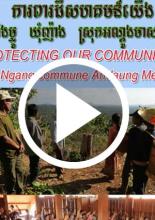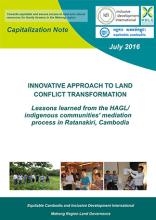Land Library
Bienvenido a la biblioteca de Land Portal. Explora nuestra amplia colección de recursos de acceso abierto (más de 74.000), que incluye informes, artículos de revistas científicas, trabajos de investigación, publicaciones revisadas por pares, documentos jurídicos, vídeos y mucho más.
/ library resources
Showing items 1 through 9 of 9.This video is part of one of the major activities of the L&A initiative “Collective Learning on Land Conflict Resolution” in Cambodia. It shows how important the solidarity of villagers is important to prevent land grabbing.
Up to 2.5 billion people depend on indigenous and community lands, which make up over 50 percent of the land on the planet; they legally own just one-fifth. The remaining land remains unprotected and vulnerable to land grabs from more powerful entities like governments and corporations.
In Cambodia, the majority of the population is still composed of smallholder family farmers. 54% of the total labour force is employed in agriculture. They have access to 3.6 million ha of land, representing 19% of the country’s total land.
In the Mekong region, conflicts between local communities and large scale land concessions are widespread. They are often difficult to solve.
2014 was a year in which many citizens around the world lost hope and trust in conventional leaders’ abilities to solve national and global challenges.
All four countries in continental South-East Asia featured in this paper (Myanmar, Cambodia, Laos and Vietnam) are experiencing land conflicts that could potentially destabilise their governments.1 Thailand is in a similar situation in many respects, as it has faced mounting tensions over land te
While nearly 80 percent of food consumed in sub-Saharan Africa and Asia is produced by smallholder farmers, the Bank negates the importance of small-scale farming for sustainable rural development and food security.
In the last ten years or so, the global interest in, and concerns about, the issue of how the world shall provide a growing population with sufficient food, bioenergy and wood raw material has attracted increasing attention.
This report examines the role of European Union (EU) member States, both collectively and individually, in the current reported wave of foreign land investment in Africa that has led to the current use of the term ‘land grabbing’.It discusses whether this role is consistent with the EU’s commitm





